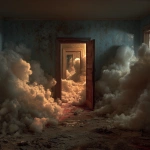Explore the Best AI Image Gallery

Weaving Innovation: How IoT in Smart Homes is Transforming the Creative Industry
The convergence of the Internet of Things (IoT) and smart homes has sparked a revolution in various sectors, and the creative industry stands to be significantly transformed. From interactive art installations to personalized storytelling experiences, the possibilities are boundless. This blog post explores how IoT in smart homes is reshaping the creative landscape, highlighting its potential uses, ethical considerations, and future trends.
New Dimensions of Creative Expression
IoT-enabled smart homes provide a dynamic canvas for artists and designers to experiment with new forms of expression.
- Interactive Art Installations: Imagine walking into a living room where paintings respond to your movements, sculptures shimmer in sync with your heartbeat, or installations generate soundscapes based on the ambient temperature. IoT sensors can capture real-time data from the environment and translate it into interactive artistic experiences, blurring the lines between viewer and artwork.
- Personalized Storytelling: Narrative experiences can be tailored to individual preferences and interactions within a smart home. Imagine a childrens bedtime story that adjusts its pace and plot based on a childs emotional cues, detected through wearable sensors. Or, consider a personalized mystery game where clues are hidden throughout the house, revealed through voice commands or triggered by specific actions.
- Immersive Environments: Smart home technology can create immersive environments that transport users to different worlds or scenarios. Imagine stepping into a virtual garden where the scent of flowers fills the air, birdsong fills your ears, and gentle breezes caress your skin – all simulated through IoT-controlled lighting, sound systems, and even aroma diffusers.
Ethical Considerations in the Age of Smart Creativity
While the potential for innovation is immense, its crucial to address the ethical implications of using IoT in creative contexts:
- Data Privacy and Security: Smart homes collect vast amounts of personal data. Its essential to ensure that this data is handled responsibly, with user consent and robust security measures in place to protect against breaches.
- Bias and Algorithmic Fairness: AI algorithms used in creative applications can perpetuate existing biases if not carefully designed and monitored. Ensuring fairness and inclusivity in these systems is paramount.
- Ownership and Authorship: As AI becomes more involved in the creative process, questions arise about authorship and intellectual property rights. Clear guidelines and legal frameworks are needed to address these evolving challenges.
Future Trends Shaping Smart Creative Landscapes
The convergence of IoT, smart homes, and creative technologies is constantly evolving. Here are some trends that will shape the future:
- Personalized AI Assistants for Creatives: Imagine having an AI assistant that understands your artistic vision and helps you bring it to life, suggesting materials, generating ideas, or even assisting with technical aspects of creation.
- The Rise of Collaborative Smart Homes: Smart homes will become platforms for collaborative creativity, allowing artists from different locations to work together on projects in real-time, sharing ideas and contributing to a shared creative space.
- Seamless Integration with the Physical World: Creative experiences will increasingly blend the physical and digital realms. Imagine interactive sculptures that respond to touch, furniture that transforms into artistic installations, or clothing that changes color based on your mood.
Conclusion
IoT in smart homes is poised to revolutionize the creative industry, unlocking new avenues for artistic expression, personalized experiences, and immersive storytelling. By embracing these innovations while addressing ethical considerations, we can pave the way for a future where technology empowers creativity and enriches our lives.


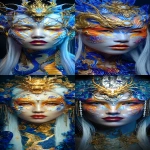




](https://images.ai-img.art/thumbnails/150/2fbd98ecfc425cfc1597779121e1c0305437067779e9c471eb64ff9615d5be98.webp)





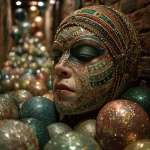


](https://images.ai-img.art/thumbnails/150/3020b8c2b6d9be07e042357107af1de10deb274a41d2b0f332684ad4b532a702.webp)






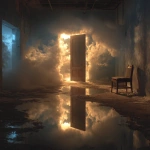
](https://images.ai-img.art/thumbnails/150/269414b0e541026702e9e67c67602c96162f37ff460a388b3b36314c8fc936dd.webp)

](https://images.ai-img.art/thumbnails/150/485c8b1c747827bdc9a962f8a1919b3c259b18dd263b260208a1eae19fb85e07.webp)

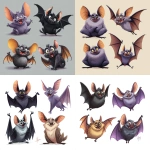

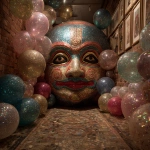
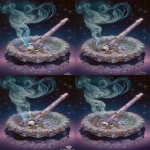



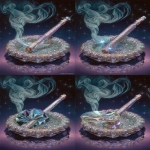

](https://images.ai-img.art/thumbnails/150/5197af8969d850e2a43e141d41e482ccbceedebceb2a4caf9f098f943f9d1b0f.webp)

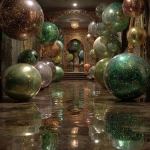

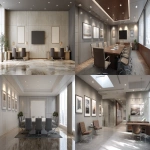
](https://images.ai-img.art/thumbnails/150/8d1fe5a7a49cfc96747182431a853357913286d89258383caab2d3b4681afcb5.webp)

